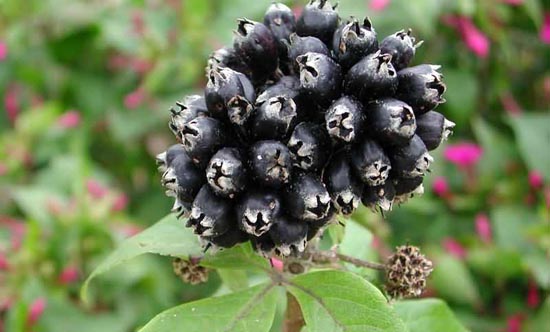The root, the rhizomes (underground stem) and the leaves are being used.
"Siberian ginseng" products that are sold in America have nothing in similar with any kind of ginseng. The Siberian genseng plant is a shrub of 1 to 3 meters tall, while the ginseng plant is herbaceous. It does not have any similarity in looks to Chinese ginseng, Korean ginseng or American ginseng. It is called Siberian ginseng in America for advertising purposes.
It was first introduced into the American herb market in the late 1970s as "Wuchaseng" and "Wujiaseng." (wu jia shen) There appears to be no historical precedent in Chinese traditions to applying the qualifier "seng (or short for ginseng )" to E. senticosus (Shiu Ying Hu, 1979). The correct Chinese name is ci wu jia.
The United States Congressional amendment to the Federal Food, Drug and Cosmetic Act – signed into law in May 2002 – eliminates any confusion regarding what is true ginseng. Now only the genus Panax can be called ginseng on labeling or in advertising. This plant is closer to wu jia pi.
Distribution:
Northern China, Korea, Japan and southeastern Russia (Taiga region).
Properties (characteristics):
Warm, bitter.
Channels (meridians) entered:
Lung, spleen, kidney, heart.
Actions & Indications:
For chronic inflammation of bronchi, Neurasthenia, low sexual function, weakness, low white cell count after radiation therapy. It helps to reduce stress, to improve the immune system, to fight cancer and aging, to reduce other effects of radiation, to improve adrenal function. Ridding of dampness, pain, weakness in lower limbs, Insomnia, tiredness, dizziness due to weakness and anxiety.

Dosage:
9~30 g for boiling with water and to be used as tea.
In tablets or capsules: each dosage equals about 3 gram of dry root.
Modern Research:
Its anti-fatigue effect is stronger than that of ginseng. (2). Improves function of megalocytes.
Improves antigen.
Inhibits the growth of cancer cells and Leukopenia of laboratory mice.
Increases the rate of the formation of e-rosette of laboratory mice.
Ginsenosides characteristic of Ginseng-(Renshen).shtml" target='_blank' title="Radix Ginseng (Renshen)">Radix Ginseng (Renshen) are not found in the roots of ci wu jia.
The extracts from the plant, taken orally, increased the ability to handle adverse physical conditions, improved mental performance, and enhanced the quality of work under stressful conditions.
To avoid adjustment to the herb, it should be used for no longer than 60 consecutive days, followed by a period of 2-3 weeks of abstinence before using it again.
According to School of Food and Nutrition of Fu Ren University in Taiwan. It improves the oxygen intake up to 8.2% on 20 athletes after taking 400mg per day of ci wu jia for 4 weeks.

![Diseases, Symptoms, tcm, [tcmwindow.com]](/uploadFile/adImg/2015/11/11/f5cbfcc0-4df5-4646-9b9a-f316651a0199.jpg)





